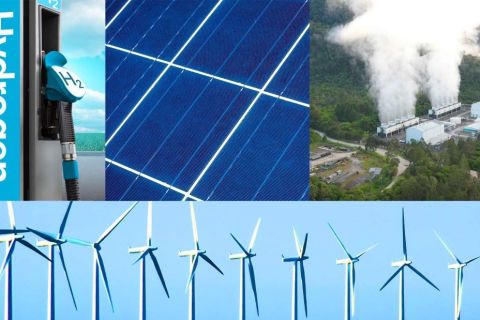Exxon Mobil Corp. on Nov. 17 offered to lease a half million acres off the Texas coast, securing space for what could become a massive project to capture and store carbon emissions.
Under pressure by investors to address climate change, Exxon Mobil in April floated an up to $100 billion industry hub to collect emissions from Gulf Coast petrochemical plants and bury them under the Gulf of Mexico.
The nearly $15 million in bids on Nov. 17 are “potentially the first time federal Gulf of Mexico acreage has been leased for purposes other than the extraction” of oil and gas, said Rystad Energy oil analyst Colin White.
The company’s bidding in U.S. Department of Interior auction “takes a long-term business view,” spokesperson Todd Spitler said. Exxon Mobil will evaluate the acreage seismic and subsurface geology once final awards are determined, he said.
Spitler declined to comment on the acreage's carbon capture potential. Exxon Mobil has said it will spend $15 billion on lower-carbon technologies over the next six years. It plans to disclose new details of emissions reduction and project spending in two weeks, it said in a filing.
The top U.S. oil company has been selling its Gulf of Mexico oil properties since 2018, putting investments into more lucrative fields off Guyana, Brazil and in U.S. shale.
In addition to the U.S. carbon capture hub, it has recently reached preliminary agreements with Singapore and Malaysia to explore projects.
Exxon Mobil snapped up 94 offshore blocks, containing 541,000 acres (219,000 hectares), the largest of any bidder and nearly a third of the tracts receiving bids.
“I don’t see it as an oil and gas exploration move,” Rystad’s White said. “And it is real money on the table.”
The acreage it offered to lease runs in a line off the Texas coast close to onshore infrastructure suitable for carbon capture activity, White said.
Some of the property is near Freeport, Texas, where offshore driller Talos Energy on Nov. 15 proposed its own carbon capture and sequestration project with a year-end 2024 launch.
Recommended Reading
Energy Transition in Motion (Week of Oct. 18, 2024)
2024-10-18 - Here is a look at some of this week’s renewable energy news, including approval of a 2-gigawatt geothermal project in Utah.
Energy Transition in Motion (Week of Nov. 1, 2024)
2024-11-01 - Here is a look at some of this week’s renewable energy news, including progress on the largest U.S. offshore wind project being developed.
Energy Transition in Motion (Week of Oct. 25, 2024)
2024-10-25 - Here is a look at some of this week’s renewable energy news, including a U.S. Geological Survey-led study pointing to massive estimated lithium reserves in the Arkansas Smackover.
Energy Transition in Motion (Week of Nov.15, 2024)
2024-11-15 - Here is a look at some of this week’s renewable energy news, including an agreement for the supply of oxide fuel cells to meet energy data center needs.
Energy Transition in Motion (Week of Nov. 22, 2024)
2024-11-22 - Here is a look at some of this week’s renewable energy news, including the ranking of top corporate solar users in the U.S.
Comments
Add new comment
This conversation is moderated according to Hart Energy community rules. Please read the rules before joining the discussion. If you’re experiencing any technical problems, please contact our customer care team.


